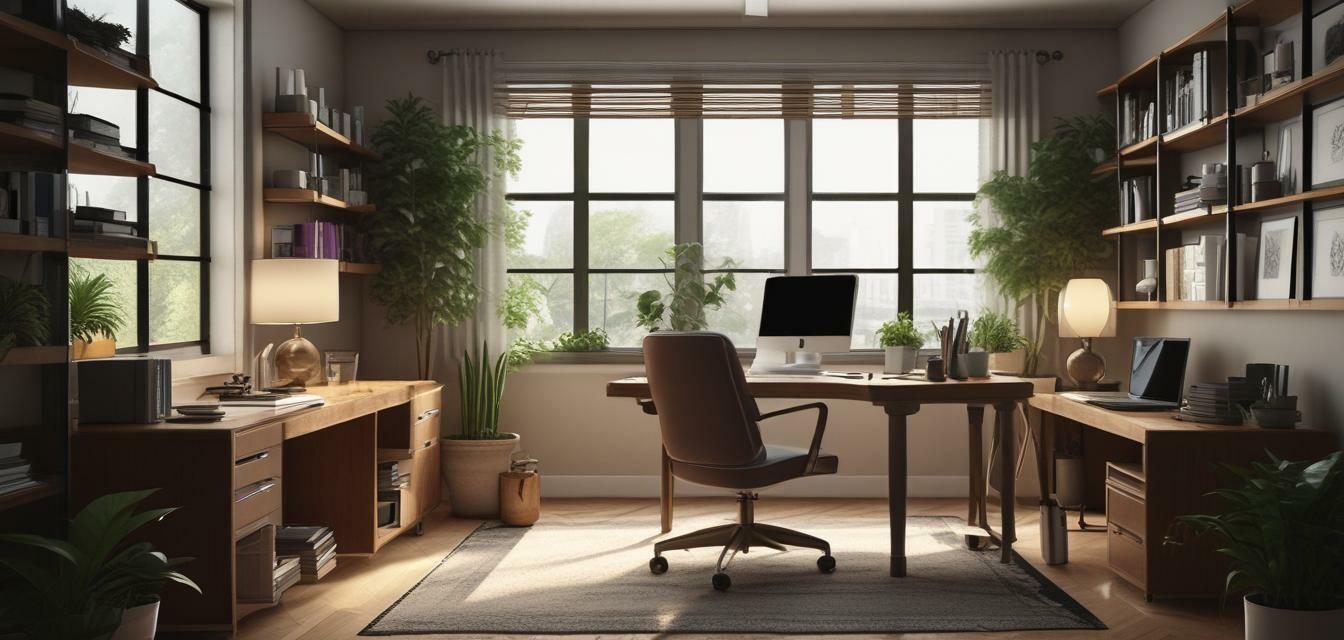
Tips for Setting Up an Efficient Home Office Layout
Key Takeaways
- Choose the right furniture to enhance comfort and productivity.
- Design a layout that minimizes distractions.
- Optimize lighting to create a welcoming workspace.
- Personalize your space with decor that inspires.
- Utilize storage solutions to keep your office organized.
Setting up a home office may seem like a simple task, but creating an efficient layout is crucial for enhancing productivity and ensuring comfort. Whether you're working from home full-time or just a few days a week, how you arrange your office can significantly impact your work efficiency. This article provides practical tips and insights for creating an optimal home office layout.
1. Evaluate your space
Before you start arranging your home office, take time to evaluate the space available to you. Consider factors such as:
- Natural light sources
- Available electrical outlets
- Room dimensions and layout
- Your personal style and preferences
Understanding your work needs
Consider what you do most in your office. Are you on the computer often, or do you conduct meetings? Tailor your layout based on these needs:
| Work Type | Layout Suggestion |
|---|---|
| Mostly Computer Work | Prioritize a comfortable desk and chair. |
| Meetings | Ensure enough space for guests and proper seating. |
| Creative Work | Include a dedicated space for brainstorming and materials. |
2. Choose ergonomic furniture
Investing in ergonomic furniture is essential for your health and productivity. Here are a few key pieces to consider:
- Ergonomic Chair: Provides adequate lumbar support.
- Adjustable Desk: Allows for both sitting and standing options.
- Monitor Stand: Helps maintain a comfortable eye level.
For more tips on selecting the right furniture, check out our guide on buying office furniture.
3. Optimize lighting for productivity
Lighting plays a crucial role in creating a comfortable workspace. Here are some tips for optimizing your office lighting:
- Utilize natural light as much as possible; position your desk near windows.
- Incorporate desk lamps with adjustable brightness.
- Consider adding ambient lighting to reduce eye strain.
Types of lighting to consider
| Type of Lighting | Benefits |
|---|---|
| Natural Light | Improves mood and focus. |
| Task Lighting | Provides direct light for specific tasks. |
| Ambient Lighting | Enhances overall visibility without harsh glare. |
4. Design your layout to minimize distractions
A well-thought-out layout helps reduce interruptions and distractions. Here are some strategies:
- Position your desk away from household traffic areas.
- Use plants or room dividers to create physical barriers.
- Keep frequently used items within arm’s reach to minimize movement.
5. Personalize your space
Making your home office feel personal can increase your motivation. Consider adding:
- Your favorite artwork or photos
- Inspirational quotes
- A plant for a touch of greenery
Explore more ideas for workspace decor in our section on decorative accessories.
6. Utilize storage solutions
A clutter-free environment is essential for maintaining focus. Here are some storage ideas:
- Use filing cabinets for paperwork.
- Incorporate bookshelves for books and decorative items.
- Employ drawer organizers to keep small items tidy.
Check out our guide on filing cabinets for tips on selecting the best storage options.
Conclusion
Setting up an efficient home office layout involves thoughtful planning and execution. By considering your space, investing in ergonomic furniture, optimizing lighting, and personalizing your environment, you can create a workspace that enhances productivity while also being comfortable. Remember, the key is to tailor the setup according to your unique work requirements.
Additional tips for beginners
- Start with a clean slate; declutter your workspace.
- Trial and error are perfectly fine – adjust as necessary!
- Stay motivated by setting small goals.
Pros
- Enhances productivity significantly.
- Improves comfort and reduces strain.
- Personalized space increases motivation.
Cons
- Initial setup costs may be high.
- Time-consuming to find the right layout.